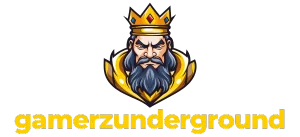In a world where gaming isn’t just a pastime but a thriving industry, the allure of game design careers is undeniable. Imagine waking up every day to create worlds where dragons fly and heroes save the day. It’s like being a digital wizard with a keyboard as your wand. Game designers get to blend creativity with technology, crafting experiences that captivate millions.
But it’s not all fun and games—well, maybe a little. The journey into game design is filled with challenges, from coding conundrums to balancing gameplay mechanics. Yet, for those with a passion for storytelling and a knack for problem-solving, the rewards can be epic. Whether dreaming up the next blockbuster title or perfecting an indie gem, game design offers a vibrant career path that’s as exciting as the games themselves. So, ready to level up your career?
Table of Contents
ToggleOverview of Game Design Careers
Game design careers encompass various roles that contribute to creating engaging gaming experiences. These roles include game designers, artists, programmers, and sound engineers. Each position plays a crucial part in the development process, from initial concept to final product.
Game designers focus on crafting gameplay elements and narrative structures. They develop mechanics that keep players engaged and explore thematic elements that resonate with audiences. Strong storytelling skills can enhance a designer’s effectiveness in creating meaningful game narratives.
Artists bring visual appeal to games through graphics and animations. Their talents shape characters, environments, and user interfaces, ensuring players immerse themselves in the gaming world. Skills in tools like Adobe Creative Suite and 3D modeling are often essential.
Programmers build the code that makes games function. They translate design ideas into functioning software, focusing on algorithms, gameplay mechanics, and optimization. Proficiency in programming languages such as C# or C++ is vital for success in this role.
Sound engineers enhance the auditory experience of games. They create sound effects, background music, and voiceovers that elevate player immersion. Knowledge of audio software and sound design techniques is necessary for producing high-quality audio experiences.
Many game designers choose to specialize in a particular area, such as level design or narrative design. This specialization allows for deeper expertise and greater innovation in specific aspects of game creation. The industry also offers opportunities for independent projects, where designers can showcase their creativity and unique visions.
Understanding industry trends and emerging technologies is critical. Staying informed about developments in virtual reality, artificial intelligence, and interactive storytelling can lead to ongoing growth and opportunities. The dynamic nature of game design promotes continuous learning and adaptation.
Skills Required for Game Design

Game design careers require a blend of technical and creative skills. Mastering these skills enhances a designer’s ability to create engaging games.
Technical Skills
Proficiency in programming languages like C++ and Java serves as a foundation for many game designers. Understanding game engines such as Unity and Unreal Engine allows for effective game development. Knowledge of 3D modeling tools like Blender or Maya contributes to designing characters and environments. Familiarity with version control systems helps manage project files and collaboration. Skills in scripting and debugging ensure smooth gameplay mechanics. A solid grasp of mathematics and physics benefits game mechanics and functionality.
Creative Skills
Creativity plays a pivotal role in game design. Storytelling ability helps in crafting compelling narratives that captivate players. Design skills are essential for creating visually appealing game environments and characters. Problem-solving skills aid in overcoming design challenges that arise during development. A strong sense of player psychology guides the development of engaging gameplay experiences. Visual aesthetics and artistic vision contribute to the overall feel of a game. Collaboration with team members ensures diverse ideas come together effectively.
Different Roles in Game Design
Game design encompasses various roles, each vital for developing engaging gaming experiences. Professionals across these roles collaborate to create immersive worlds and captivating narratives.
Game Designer
Game designers shape the overall gameplay experience. They craft mechanics, establish rules, and ensure player engagement throughout the game. By analyzing player feedback, game designers refine and iterate on concepts, striving for a balanced and enjoyable experience. They also integrate narrative elements into the gameplay, marrying storytelling with interactive elements. Proficiency in design software and a solid understanding of player psychology greatly enhance a game designer’s effectiveness.
Level Designer
Level designers focus on constructing the game environment. They create individual levels, including layouts, challenges, and objectives. Attention to detail is essential, as level designers work to enhance player immersion and flow within each segment of the game. Collaborating with artists and programmers, they ensure that the levels are visually appealing and run smoothly. Familiarity with game engines and spatial design principles is crucial for crafting engaging levels that provide unique player experiences.
Narrative Designer
Narrative designers develop the story and dialogue that drive the game. They create compelling character arcs and plotlines, ensuring that players feel invested in the journey. Balancing narrative with gameplay mechanics is a central challenge; narrative designers must integrate storytelling seamlessly into interactive elements. They collaborate closely with game designers and artists to align the narrative with visual and gameplay aspects. Strong writing skills and a deep understanding of storytelling structures are vital in this role.
UI/UX Designer
UI/UX designers focus on the user interface and overall player experience. They design menus, HUDs, and other visual elements that guide players throughout the game. By prioritizing player accessibility and ease of navigation, UI/UX designers aim to create intuitive interactions. Testing and gathering feedback play a crucial role in their process, allowing for continuous improvements. Expertise in design tools and an understanding of player behavior significantly enhance their contributions to creating an engaging game environment.
Educational Pathways for Aspiring Game Designers
Aspiring game designers can choose from various educational pathways that equip them with essential skills. Degree programs specifically tailored for game design emphasize both theory and practical application.
Degree Programs
Bachelor’s degrees in game design often provide a comprehensive education covering topics such as gameplay mechanics, narrative design, and programming fundamentals. Some universities even offer specialized degrees in areas like interactive media or digital arts, allowing students to focus on their interests. Pursuing a master’s degree in game design can further enhance knowledge and open up advanced career opportunities. Each degree program typically includes hands-on projects, enabling students to build portfolios showcasing their skills.
Online Courses and Bootcamps
Online courses and bootcamps offer flexible learning options for individuals interested in game design. Many platforms provide courses covering game engines, programming languages, and design principles, making it easier to learn at one’s own pace. Bootcamps, in particular, focus on intensive training and often include project-based assignments that help develop real-world skills. Completing these programs can provide valuable experience and increase employability in a competitive job market.
Career Opportunities and Job Market
Game design careers present diverse opportunities across various roles, each contributing uniquely to the industry. Game designers focus on gameplay mechanics and immersive storytelling, shaping how players interact with games. Artists bring visual elements to life through graphics and animations, enhancing overall aesthetic appeal. Programmers play a crucial role by converting design ideas into working software, addressing both functionality and performance. Sound engineers create audio components, elevating the gaming experience for players.
Job prospects in the gaming industry continue to grow, driven by increasing demand for innovative content. According to the U.S. Bureau of Labor Statistics, employment for multimedia artists and animators is projected to grow by 4% from 2021 to 2031, reflecting the industry’s expansion. Roles such as UI/UX designers specialize in crafting seamless user experiences, balancing functionality and design to retain player engagement.
Freelance opportunities abound for independent game developers, allowing for creative freedom and innovation outside traditional studio environments. Understanding emerging trends, like virtual reality and artificial intelligence, offers a significant advantage in the job market. A proactive approach to skill development and collaboration within teams can enhance career trajectories.
Many game developers benefit from participating in game jams and industry conferences, networking with peers and showcasing their work. Building an online portfolio becomes essential for attracting employers and demonstrating skills in real-world scenarios. Aspiring professionals should consider internships or entry-level positions to gain hands-on experience and understanding of the development cycle.
The evolving landscape of gaming continues to create job opportunities, making staying informed about industry advancements vital for career growth. Aspiring game designers are encouraged to embrace continuous learning and specialization to thrive in this dynamic environment.
A career in game design offers a unique blend of creativity and technology that appeals to many. With diverse roles available from game designers to sound engineers there’s something for everyone. The industry’s growth and demand for innovative content create ample opportunities for those willing to learn and adapt.
Aspiring game designers should focus on honing both technical and creative skills to thrive in this competitive field. Embracing collaboration and networking can also open doors to exciting projects and career advancements. As technology evolves the potential for new and engaging gaming experiences will only expand. With dedication and passion anyone can carve out a successful path in the world of game design.


